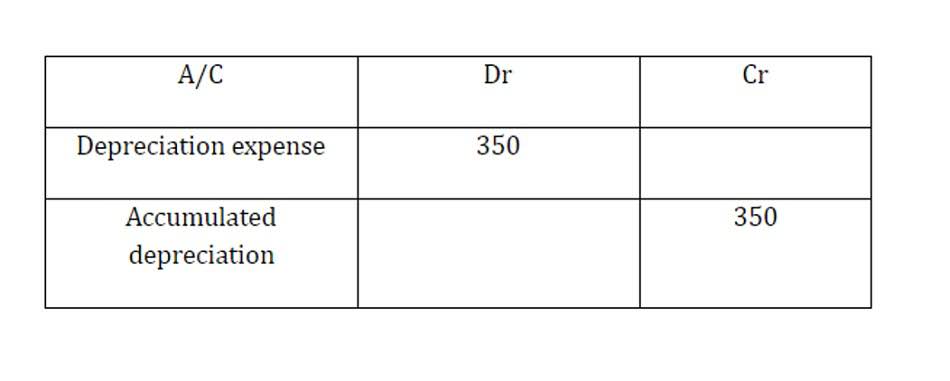
Hence, the financial statements contain management’s assertions about the transactions, events and account balances and related disclosures that are required by the applicable accounting standards such as US GAAP or IFRS. Understanding the concept of management assertions is pivotal for grasping the fundamentals of accounting and auditing. Management assertions are essentially statements made by management regarding the accuracy and integrity of the financial statements. From an auditor’s viewpoint, these assertions are critical in guiding their efforts to verify the integrity of the financial information presented.

List of Audit Assertions

Transactions recognized in the financial statements have management assertions in auditing occurred and relate to the entity. Sufficient and appropriate disclosures have been made on related transactions, events and account balances. Appropriateness is the measure of the quality of audit evidence, i.e., its relevance and reliability.
Purpose and Objectives of Auditing Financial Statements
Finally, accuracy and valuation assertions ensure that financial and other information is disclosed fairly and at appropriate amounts. Auditors review these assertions by examining the financial statements and accompanying notes, ensuring that the disclosures are complete, clearly presented, and free from material misstatements. When it comes to account balances, management is responsible for making several assertions. Rights and obligations assertion states that the entity holds or controls the rights to its assets and has obligations to settle its liabilities. Completeness of account balances ensures that all assets, liabilities, and equity interests that should have been recorded have been included in the financial statements.
Valuation or Allocation

Materiality needs to be considered when judgements are made about the level of aggregation and disaggregation. In many cases, the meaning of the assertions is fairly obvious and in preparation for their FAU or AA exam candidates are reminded of the importance to learn and be able to apply the use of assertions in the course of the audit. From the perspective of an auditor, verifying these assertions involves a meticulous examination of legal documents, contracts, and agreements to confirm ownership and liability. For instance, an auditor might scrutinize property titles or lease agreements to validate the assertion of rights over a piece of real estate. Conversely, loan agreements and bond indentures might be reviewed to affirm the company’s obligation to repay its debts. In another scenario, a company might record sales revenue upon shipping goods, but the auditor discovers that the goods were shipped after the close of the accounting period.
- The points made above regarding aggregation and disaggregation of transactions also apply to assets, liabilities and equity interests.
- In the realm of auditing, existence or occurrence assertions play a pivotal role in the verification of financial statements.
- Materiality needs to be considered when judgements are made about the level of aggregation and disaggregation.
- Understanding these assertions is key for anyone engaged in the financial reporting process, be it in preparation, examination, or analysis.
This would be an issue with the occurrence assertion, as the revenue would be attributed to the wrong period. From the perspective of an auditor, the existence assertion is about the tangible QuickBooks presence of assets. For example, when auditing inventory, an auditor must physically verify that the inventory exists. Similarly, for fixed assets, the auditor may inspect the physical assets or review documentation proving ownership.

List of Audit Assertions Related to Account Balances
- Complex audits might also involve cross-referencing industry standards for asset evaluation to uphold integrity.
- This iterative process continues until the auditor obtains reasonable assurance about the assertions under consideration.
- In many cases, the meaning of the assertions is fairly obvious and in preparation for their FAU or AA exam candidates are reminded of the importance to learn and be able to apply the use of assertions in the course of the audit.
- All transactions, balances, events and other matters that should have been disclosed have been disclosed in the financial statements.
- Such practices are common with assets whose market values fluctuate significantly, ensuring that the financial statements provide a true representation.
The consideration of management assertions during the various stages of audit helps to reduce the audit risk. The implicit or explicit claims by the management on the preparation and appropriateness of financial statements and disclosures are known as management assertions. Understanding the audit assertions is very important from an investor’s viewpoint because almost every financial metric used to evaluate a company’s stock is verified through these assertions. The audit assertions are carried out to verify the financial figures computed using data from the company’s financial statements.
- The existence or occurrence assertion verifies that assets, liabilities, and transactions reported in the financial statements actually exist or have occurred during the reporting period.
- Relevant tests – Vouching the cost of assets to purchase invoices and checking depreciation rates and calculations.
- Accuracy – this means that there have been no errors while preparing documents or in posting transactions to ledgers.
- From the perspective of an auditor, verifying these assertions involves a meticulous examination of legal documents, contracts, and agreements to confirm ownership and liability.
- Completeness assertions are a cornerstone of financial integrity, influencing various stakeholders differently.
- It refers to the presentation of all the transactions and the disclosure of all the events in the financial statements and confirms that they have occurred and are related to the entity.
Completeness ensures that all financial transactions and accounts that should be included in the financial statements are recorded. Auditors often use tracing, following transactions from their source documents to their final entries in the financial records, to confirm completeness. For example, they might trace accounts payable from purchase orders to ensure all outstanding liabilities are captured. Rigorous examination of internal controls and adherence to accounting standards help auditors confirm that financial statements provide an HVAC Bookkeeping accurate and comprehensive view of the company’s obligations and earnings. In the realm of auditing, completeness assertions hold a pivotal role in ensuring that all transactions and accounts that should be recorded are indeed accounted for in the financial statements.